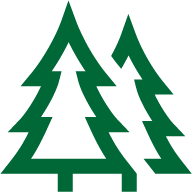
Tree Care Basics: A Starter Guide
The Dangers Of Hazardous Tree Removal
Johnni Knight
Removing hazardous trees can be dangerous. Not only can you be hurt by the equipment you're working with, but by large limbs or the tree itself. Removing hazardous trees is best left to professionals who know how to mitigate the risk of injury due to nearby power lines, improper use of equipment, and falling trees.
So what constitutes a hazardous tree?
- Holes in the tree
- Rotting wood
- Too much fungal growth eating away at the tree
- Tree leaning too much
- Tree struck by lightning
- Wind or storm damage
Trees that physically look like they pose a threat to people and property should be assessed by a tree removal service. Tree professionals will survey the tree and its immediate area to ascertain what kind of risk there might be to the tree removal crew. They may use a traditional method to remove the tree or decide that a tree removal crane is the best way to go. What are some of the risks involved in hazardous tree removal?
Risk 1: Power Lines
You should always assume power lines are live and harbor the danger of electrocution. You can be electrocuted even through black-coated lines. The coating is weather-coating and does not protect you from electrocution should you touch the wire.
Risk 2: Equipment Usage
The Occupational Safety and Health Administration (OSHA) requires that tree removal crews wear personal protective equipment before attempting to remove any hazardous tree. Crews must also be trained in the proper use of tree removal equipment. This includes ropes, saws, cranes, and chippers. Improper use can lead to injury or death.
Risk 3: Tree Collapse
Trees that have interior rot may unexpectedly collapse as crews work on them. That's why professional tree removal crews are trained to understand that trees may fall in uncertain directions and prepare for the possibility that gravity may take ensue.
Tree Removal Hazards for the DIY Homeowner
Many homeowners feel that they can remove a hazardous tree on their own in order to save money. Homeowners face the same risks as the pros and then some. Power lines, improper equipment usage, and the danger of unexpected tree collapse can cause injury or death.
You may feel like common sense will keep you safe. However, hazardous trees that don't look especially hazardous can suddenly become so and fall on homes, people or vehicles. You have to ask yourself if the DIY route is worth the risk. It doesn't hurt to consult with a tree removal company before tackling it on your own.
Contact a company that specializes in hazardous tree removal to learn more.
Share

Proper tree care is an essential part of maintaining your property's appearance and overall well-being. After all, neglected trees can quickly become safety hazards if limbs should fall and damage your property. That's why it's important that you know how to take care of your trees. Luckily, this site is here to help. With the information on this site, you'll be able to better understand the different needs of each type of tree on your land. That way, you can tailor your tree care accordingly and you'll know when you should call a tree service for more help and ongoing care.
-
Why You Should Hire a Tree Company for Your Property 17 July 2024